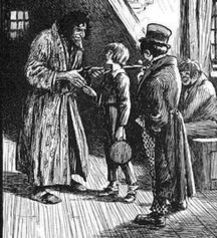
Child Criminal Exploitation (CCE)
Child Criminal Exploitation (CCE) means coercive control of a child in order for them to commit crimes on the behalf of another. Often, a child that is a victim of criminal exploitation is not recognised as such when they come to the attention of criminal justice and child safeguarding authorities.
This pattern of child exploitation is not new, nor is it unfamiliar. In Charles Dickens’ story of Oliver Twist, Oliver is homeless and starving when he meets a boy of about his own age. The boy introduces Oliver to his benefactor Fagin, a man who is a career criminal that recruits orphan children and trains them to pick pockets. In modern terms, this would be regarded as an example of criminal exploitation of children, a practice that has in more recent years come to be epitomised in England and Wales by the control of children to transport and sell drugs in the context of the phenomenon known as 'county lines'.
Modern examples of criminal exploitation are not limited to those associated with the county lines pattern; forced begging, street crimes such as ATM distraction theft, cannabis cultivation, charity bag theft, burglary, and even benefit/insurance fraud and money laundering are all patterns of child criminal exploitation in the 21st Century.
The nature and scope of CCE is constantly evolving, adapting according to environments, opportunities and disruptive threats. On June 17th 2019, The Today Programme reported the emerging evidence for children being paid “bounties” by gang members to carry out knife attacks on their behalf (BBC, 2019). The diversity of criminality reflects the heterogeneity of criminal actors, who will exploit children in a variety of ways depending on their criminal needs and motivations. Different modalities or patterns of exploitation intersect with each other and are supported and maintained by ongoing child abuse in the form of physical and sexual violence, emotional and psychological abuse, and neglect.
Responses to the problem of forced criminal exploitation of children in England and Wales often fail to identify a child as a potential victim. This is due to a response that is based upon flawed assumptions about those that have been exploited, about the perpetrators, and about the processes of the exploitation. Consequently, current understanding of the problem is reductive, and interventions are limited. Understanding exploitation of children "is not simply about identifying the characteristics of children who are vulnerable to abuse; it requires a wider perspective and understanding of the contexts, situations and relationships in which exploitation [of children] is likely to manifest." (Ofsted, 2018).


